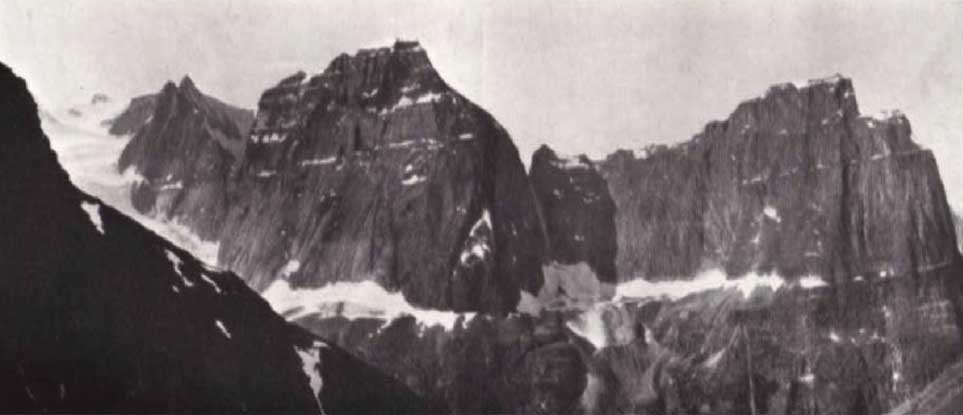Columbia River and Fraser River and North Thompson River drainages
Headwaters of the Raush, North Thompson, McLennan, Albreda, Camp, and Canoe rivers
52.75 N 119.55 W — Map 83D/12 — Google — GeoHack
Earliest known reference to this name is 1927 (as “Premier Group”)
Name officially adopted in 1962
Official in BC – Canada
“Premier Group” of mountains, later “Premier Range,” was proclaimed in 1927 to commemorate prime ministers of Canada and Great Britain and premiers of British Columbia. The occasion of the proclimation was the Diamond Jubilee of Confederation. Canada celebrated 60 years of Dominion in 1927.
The range was in initially designated “Premier Group” by Order in Council, as arraigned by the government of British Columbia and the Geographic Board of Canada. The form of the name was changed to “Premier Range” in 1962, and it was declared that those peaks over 10,000 feet would be named after deceased former prime ministers of Canada.
Most of the mountains already had unofficial names bestowed by early explorers, recognizing people, features, and events. Those names, many of them featured on maps published in the Canadian Alpine Journal, were replaced by the names of mostly distant politicians. John Oliver came close when he visited McBride in 1925, where his daughter taught school and was principal. Laurier visited Kamloops in 1910, when, learning that he was in favour of larger reserves and recognition of aboriginal title, the chiefs of the Shuswap, Okanagan, and Thompson tribes presented him with a petition condemning BC land policies and game laws and rejecting BC’s takeover of their lands.
Several peaks had unofficial names that were superseded:
Laurier Glacier — not Hostility Glacier
Mount Arthur Meighen — not Mount Carpé
Mount Richard Bennett — not Mount Goddell
Mount Mackenzie King — not Hostility Mountain
Tête Glacier — not Holway Glacier
Penny Mountain — not Holways Peak
As well, the following names were no longer to be used:
Chamberlin, Mount
Withers, Mount
Crescent Mountain
Mount David
Forks Peak
Pyramid Peak
Mount Zillmer
Incisor Peak
Mount Zillmer, however, remains in official use.
There are 16 peaks above 9800 feet still unnamed in the Premier Range, of which 7 peaks exceed 10,000 feet. Other than the 1927 decision to name the highest peak (11,750 feet) after Sir Wilfrid Laurier, the relative elevation and location have not been considered when designating the peaks in this range.
- Anon. “Place names in the Premier Range, Cariboo Mountains, B.C.” Canadian Alpine Journal, Vol. 46 (1963):20
- British Columbia Geographical Names. Premier Range
- Wikipedia. Premier Range
